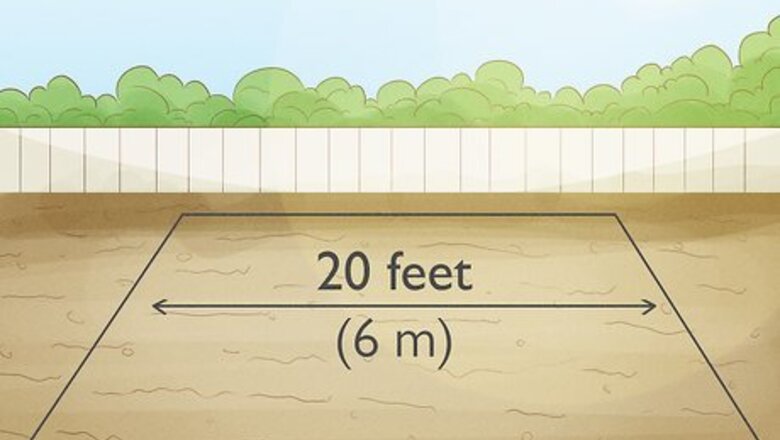
views
Getting the Garden Bed Ready
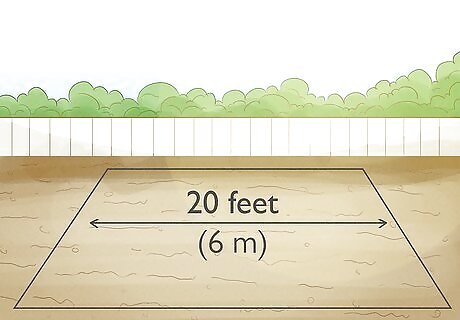
Select the right location. Watermelons need a few things to grow properly, including lots of space and plenty of sun. A good location to plant watermelon vines is an open area that gets lots of direct sunlight throughout the day. Watermelon vines can reach 20 feet (6 m) in length.
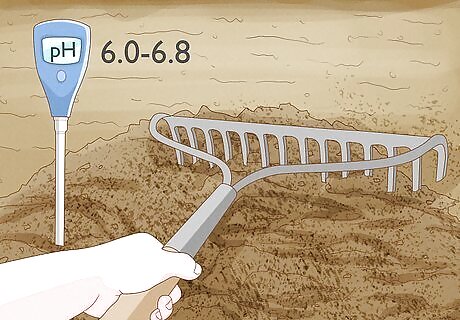
Prepare the soil. Watermelons are heavy feeders, so it’s important to amend the soil with lots of nutrients a few weeks before planting. They also need well-draining soil. Add some aged compost, manure, or seaweed to the garden bed and till it into the soil. Use compost specifically if you want to ensure your soil drains well. The ideal pH for watermelons is between 6 and 6.8.
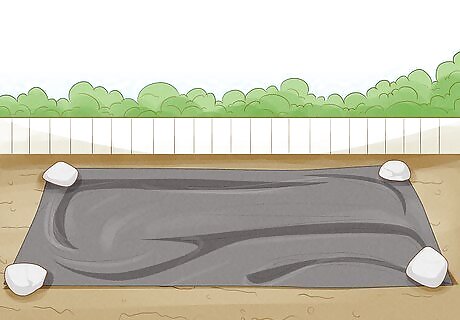
Warm the ground with black plastic or landscaping fabric. Watermelon seeds need warm soil to grow, and if you live in cooler or northern climates, you should warm the soil a couple of weeks before planting to ensure it heats up enough. Cover the garden bed with black plastic or landscape fabric, and lay some rocks along the perimeter to keep the plastic from blowing away. You can either use large sheets of black plastic or landscaping fabric from a gardening store, or you can cut open black garbage bags and use those. Landscaping fabric is a great option if you want to reuse the material. It also allows water to trickle down to the soil below, unlike plastic. You can easily cut slits in the fabric to allow your plants to grow up through it.

Pick the right time to plant. The soil temperature must reach at least 70 F (21 C) before you can plant watermelon seeds. You should also wait until at least two weeks after the last frost, otherwise the seeds won’t sprout. If you live in a cooler climate, you can start your seeds indoors and transplant them outside once the soil warms up. Start them about two weeks before the last frost date and plant them two weeks after the last frost date.
Planting and Growing Watermelon
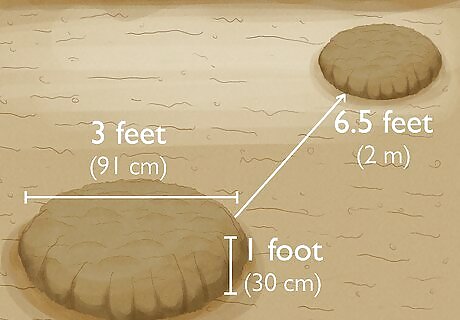
Create hills in the soil. Hills or mounds tend to drain better and warm faster than flat soil, which is ideal for watermelons. Using a rake or shovel, form the soil in the bed into hills that are 1 foot (30 cm) high and 3 feet (91 cm) in diameter. Space the hills 6.5 feet (2 m) apart.
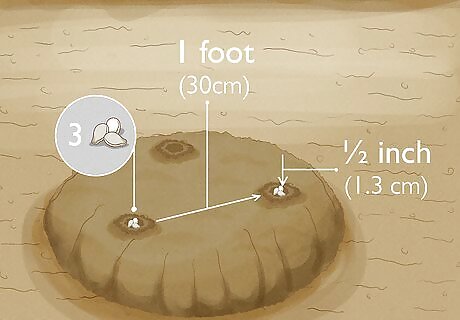
Sow the seeds. Plant nine watermelon seeds in each hill. Plant the seeds in groups of three. Space the seed groups out evenly around the hill so the clusters are about a foot (30 cm) apart. To sow the seeds, simply press each seed ½ inch (1.3 cm) deep into the soil. After you plant them, water them thoroughly.
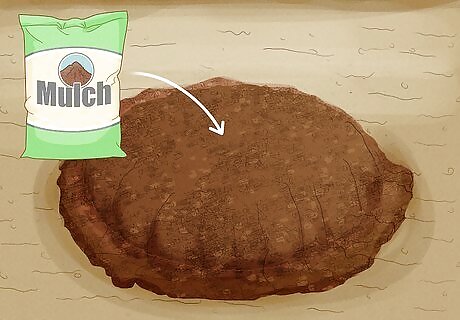
Add a layer of mulch. Mulch is good for watermelons because it keeps the soil warm, retains moisture, and keeps weeds and pests out. Once the seeds have been planted, cover the hills with leaves, straw, black plastic mulch, or black landscaping fabric. If you live in a cooler climate, black plastic mulch or landscaping fabric will help keep the soil warmest as the watermelon seeds grow.
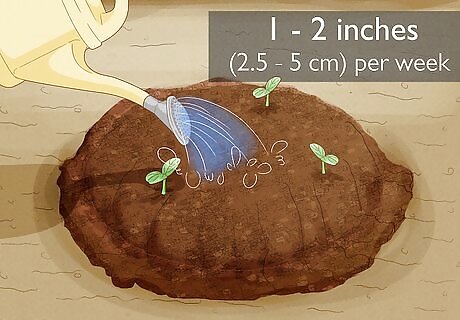
Water each week while the plants grow. While watermelon plants are in the initial growing stages, they need plenty of water. Make sure they get 1 to 2 inches (2.5 to 5 cm) per week as the seeds germinate, and as the plants grow, bloom, and fruit. Once the fruit has formed, you can cut back on watering. Only water the plants during dry spells when there's no rain. Make sure that the plants do get watered once a week, either through rain or irrigation.
Shaping the Watermelon into a Square

Choose a box to grow the watermelon in. Growing square watermelons is as easy as placing a young fruit into a square box. As the watermelon grows, it will grow into the box and grow in the shape of a cube. The mold must allow sunlight and air to pass through. To determine the size of the mold, check the seed package to find out the mature size of the fruit you're growing, and then pick a mold that’s a little smaller. Make sure there's an opening in the lid for the stem, and that there's a lid that opens, closes, and latches. Glass and acrylic boxes are ideal because they allow sunlight to pass through. You can find special molds designed to grow watermelons, which are available from internet-suppliers. You can also use a wooden or metal box with lots of holes in it. Alternatively, you can make your own mold from wood, metal, or another material. If you're stuck for molds, you can also use a concrete or cinder block for the mold, but this will not yield a perfectly square watermelon.
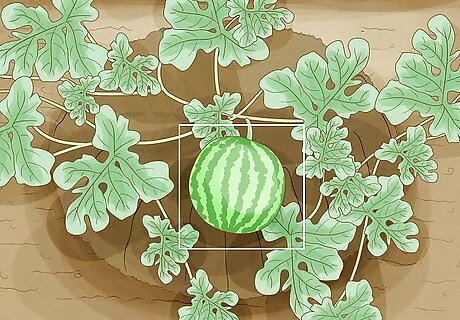
Pick a healthy watermelon from the vine. When the watermelon fruit is still young and about the size of a softball, choose a healthy specimen to grow into a square. Look for fruit with no bruises, blemishes, holes, or insect damage. You should also look for a round fruit since this will likely grow more evenly.

Place the watermelon into the mold. Open the box or mold and place the healthy fruit inside. Leave the fruit on the stem so it will continue to grow. Close the lid partway. Slot the stem into the opening in the lid. Close the lid so the fruit is inside the box but still attached to the plant by the stem. Latch the lid so the growing fruit doesn’t burst out of the box. Place the box on the ground with the lid and stem at the top.

Continue caring for the watermelon as it grows. Make sure it gets plenty of sunlight throughout the day, and water the plant if there's a dry spell. Watermelons have a long growing season, and the weather will need to stay between 70 and 80 F (21 and 27 C) consistently for the fruit to grow and ripen properly. As the watermelon grows, the fruit will get bigger and will eventually take on the shape of the mold. Monitor the growth of the watermelon. If it appears to be too big for the box, take it out and allow it to finish maturing outside the box.
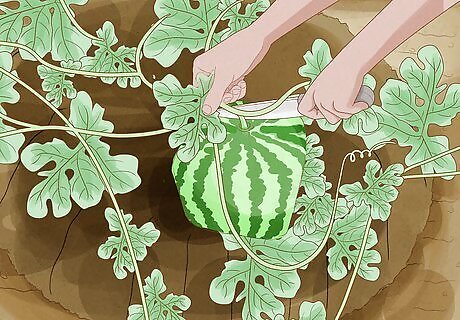
Harvest the square watermelon when it is ripe. The watermelons will all mature around the same time, so you can gauge if your square watermelon is ripe by the maturity of the other fruit on the vine. To harvest your square watermelon, unlatch the lid and gently pull the watermelon out of the box. A watermelon is ready for harvest when the tendrils around the stem dry out, a light patch develops on the bottom of the fruit, and the fruit sounds dull and hollow when you tap on it.


















Comments
0 comment